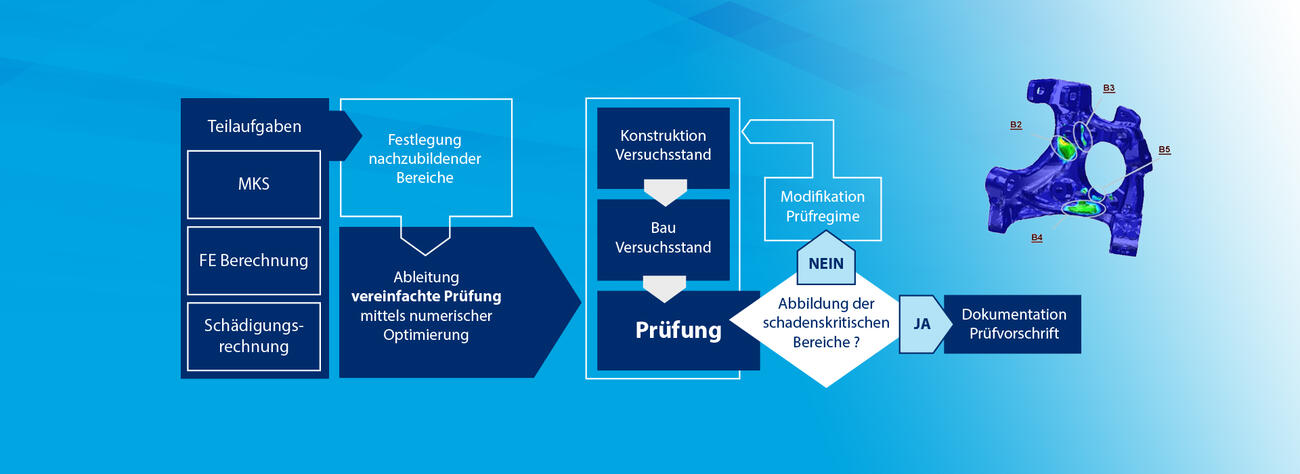Derived testing procedures
IAMT offers simplified and accelerated/time-lapse component testing procedures to reduce both investigative time and cost.
In these, complex multi-axial component testing is made as simple as possible with a reduced number of test channels, detached from the overall mechanism and executed on the component test bench or rig. The objective of a simplified test regime is to replicate a pattern of damage similar to that produced in the reference test setup (damage equivalence).

Example applications for derived testing procedures
- Tailored time-lapse substitute testing
- Tailored substitute testing with a reduced number of test channels
- Definition of substitute mounts and bearings for test setups derived from the assembly in order to reduce the cost or avoid expensive prototypes (partial vehicle body tests)
Automated algorithms for increased efficiency in derived test procedures
Determining a damage-equivalence test regime is generally a time-consuming, iterative optimisation process which requires extensive experience in damage mechanisms and test setup design. Using various numerical methods, IAMT Engineering reduces the length of the iterative approximation process, enabling us to make considerable savings in cost and time.
Areas of application
Essentially, all components in the mechanical system and particularly axle components (wheel carriers, swivel hubs, steering knuckles, control arms, cross members etc.) Subframes, strut towers etc.

